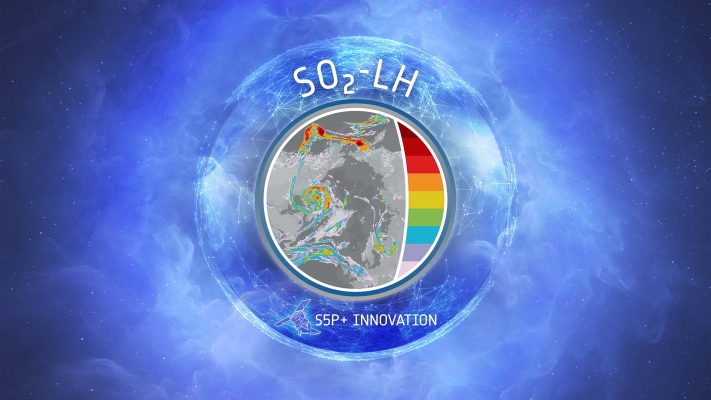
DLR – GERMAN AEROSPACE CENTER (DE)
The ESA Sentinel-5p+ Innovation project (S5p+I) has been initiated to develop novel scientific and operational applications, products and retrieval methods that exploit the potential of the Sentinel-5p mission’s capabilities beyond its primary objective.
Accurate determination of the location, height and loading of SO2 plumes emitted by volcanic eruptions is essential for aviation safety. The SO2 layer height is furthermore one of the most critical parameters that determine the impact on the climate. The height of volcanic ash columns are often estimated by local observers with mostly unknown accuracy. The plume height can also be determined using aircraft, ground-based radar or LIDAR but such observations are often not available and many volcanic eruptions in remote areas remain not observed. In addition, volcanic plumes containing SO2 but not ash cannot be seen directly. SO2 in the atmosphere has important impacts on chemistry and climate at both local and global levels.
Natural sources account for ~30% of SO2 emissions. Next to contributions from volcanic activity, these include emissions from marine phytoplankton and a small contribution from soil and vegetation decay. However, by far the largest contributions in global SO2 production are from anthropogenic sources. These account for the remaining 70% of global emissions and primarily relate to fossil fuel burning, with smaller contributions from smelting and biomass burning.
While satellite instruments, in principle, provide global products e.g. from SEVIRI (Second Generation Spin-stabilised Enhanced Visible and Infra-Red Imager) or AIRS (Atmospheric Infra-Red Sounder), they have no or little vertical resolution. SO2 height retrievals have been developed for IR sensors like the scanning IASI (Infrared Atmospheric Sounding Interferometer). This can provide information on the vertical distribution of SO2 in a volcanic plume but only at a horizontal resolution of 12 km. Although retrievals of SO2 plume height have been carried out using satellite UV backscatter measurements from e.g. OMI (Ozone Monitoring Instrument) or GOME-2, until now such algorithms are up to now very time-consuming, since the spectral information content and its characterization require computationally demanding radiative transfer modelling. Due to the high spatial resolution of TROPOMI (Tropospheric Ozone Measurement Instrument) aboard S5p(Sentinel-5p) and consequent large amount of data, an SO2 layer height algorithm has to be very fast.
The SO2 Layer Height (SO2LH) theme is dedicated to the generation of an SO2 layer height product for Sentinel-5p taking into account data production timeliness requirements.
The S5p+I: SO2LH project is funded by the European Space Agency ESA
The coordination of the project is under the responsibility of the German Aerospace Center DLR.
The objectives of the SO2 LH project are:
• Development of an SO2 layer height product for Sentinel-5p;
• Assessment of the performance of the new algorithm specifically with respect to timeliness requirements in operational processing frameworks;
• Assessment of the applicability of various algorithms based on e.g. EISF or a LUT approach;
• Assessment of the errors in the presence of absorbing and non-absorbing aerosols;
• Assessment of retrieval results based on observation conditions, e.g. inhomogeneous scene;
• Demonstration of the new retrieval on a number of cases of volcanic eruptions, including intercomparisons to SO2 height levels for volcanic eruptions with available OMI and GOME2 SO2 height level retrievals;
• Discussion on how the effect of layer altitude change can be distinguished from a change of vertical column;
• Assessment of the contribution of the new LH algorithm to the independent operational SO2 column retrieval
• Discussion of mechanisms of adding the LH product to the SO2 operational column product (e.g. inclusion into the existing SO2 total column product), or justification for a standalone product.
The S5P+I: SO2LH project had its official kick-off on 3 July 2019
The project duration is 24 month
Atmospheric Chemistry and Physics (2022)
Geoscientific Model Development (2022)